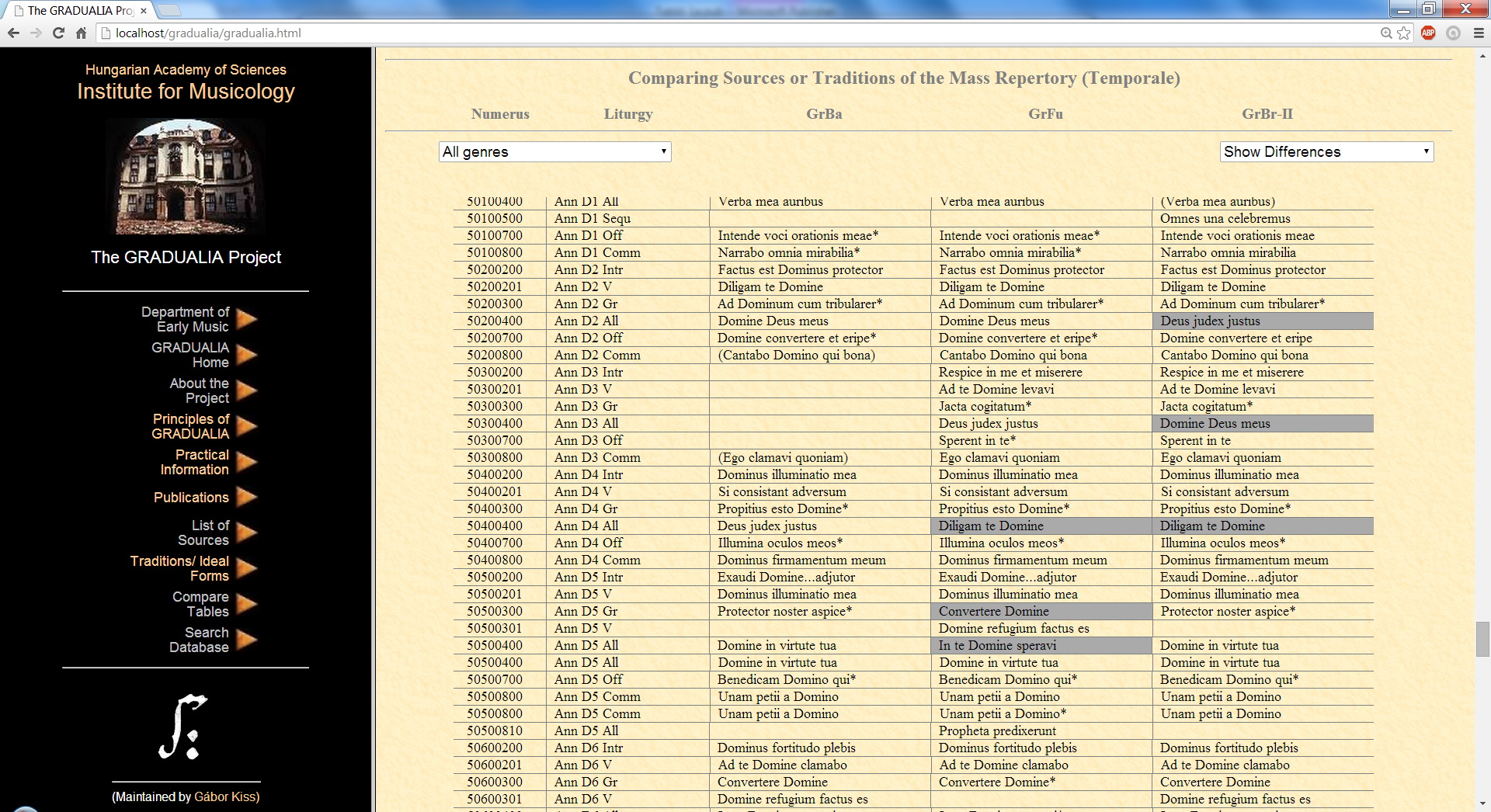Further details
The project began in 2009 on the initiative of Gábor Kiss. Its aim is the comparative analysis of different Mass repertories. In this respect it follows the CAO-ECE project, dedicated to the study of Office repertories. There were few precedents of it in the past; since on the whole Mass repertories are more uniform than those of the Office, comparative research was done mainly in the field of the latter. However, a differentiation between different traditions or branches of traditions is possible among Mass repertories too, but for this it is not enough to examine single points, but we have to compare whole repertories. In order to do this we followed the methods of CAO-ECE:
- The sources are indexed according to a standardized method.
- The chants are listed according to a pre-defined, complete (‘ideal’) liturgical system, which uses a fixed numbering. Since each number denotes a definite point (referring to the liturgical season, the feastday and the genre), the repertories become comparable in an exact manner. About the principles of the numbering and its differences from that of CAO-ECE see: Principles of GRADUALIA.
The source indices prepared in the course of the project can be viewed in two places, on a separate webpage of the Department which is devoted to the databases and research projects (www.zti.hu/earlymusic/gradualia/gradualia.html), and the website hunchant.eu, which show the whole material as part of an international project dedicated to connect similar internet chant databases (cantusindex.org).
The indices have a double aim: to present the contents of the sources on the one hand, and to make them comparable on the other, by which their significant differences become apparent. Since the standardized form is not always identical with the original arrangement of individual sources, the contents can be viewed in both websites according to either arrangement.
While the advantage of Hungarian Chant Database is to present the chants in a wider European context, the other website offers a special facility by which the sources or traditions can be automatically compared with each other on the fly, and by using a special option theis differences will be highlighted on the screen (see: Compare Tables).
Since the launch of the project all important Hungarian sources were scrutinized (over 40 sources), mainly notated ones, but the material is continually extended with the indices of Missals. Although they do not make it possible to study melodies, the results of the comparison of repertories can be confirmed by them. Besides, the domestic source material is extended with a continuously growing group of foreign comparative sources. The mor than 50 sources originated mainly in the neighbouring areas and serve regional studies, our long-range ain is to include the study of all larger regions of Europe in the project, in order to make them comparable.







